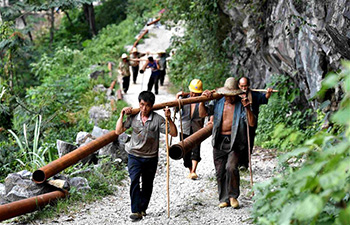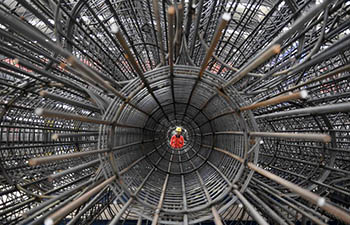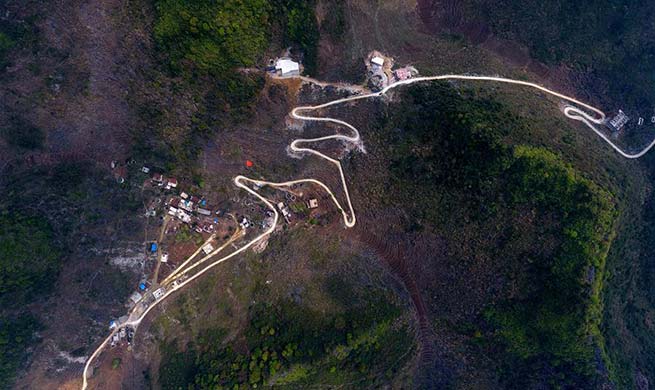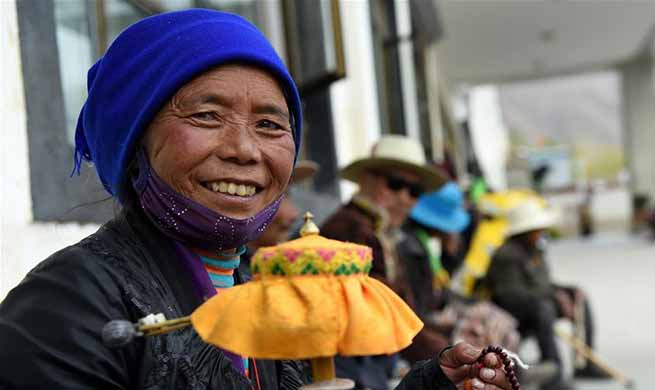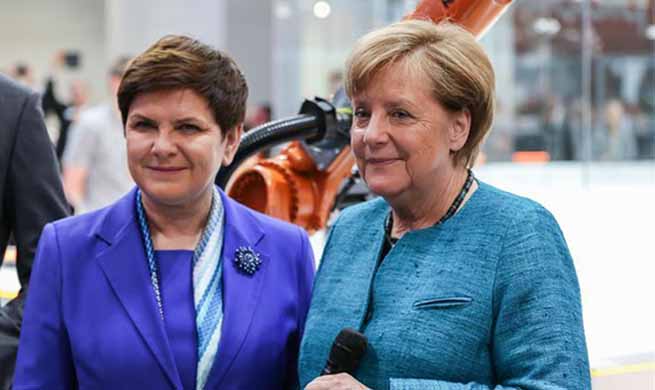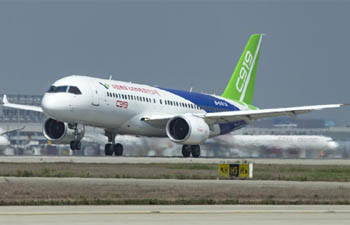by David Musyoka
NAIROBI, April 24 (Xinhua) -- New dawn is slowly setting in Kenya's coffee industry as local and global prices continue to rise and the country's sustained efforts to enforce new reforms and consolidating traditional markets and sourcing for new ones.
The initiatives being pursued have therefore boosted farmers' morale to increase production and quality in order to earn premium prices in the global market.
The industry for the last four production years has witnessed increased production, area under coffee and high prices as well.
According to the Economic Survey 2017 launched recently, the price of a kilogram for unroasted coffee for the last four years at the international market has increased by almost 30 percent to reach 4.7 U.S. dollars in 2016 compared to 3.3 dollars earned in 2013 production year.
Total coffee earnings increased to 213 million dollars in 2016 from 205 million dollars in 2015 registering a 3.9 percent increase.
Area under coffee decreased to 110,000 hectares in 2010 from 170,000 ha, a situation aggravated conversion of coffee bushes into real estate especially in Kiambu and Murang'a counties.
While in other regions coffee farmers started uprooting the crop and replacing it with high value crops mainly horticulture.
In Kiambu and Murang'a regions of central Kenya large plantations of coffee have been bought by private developers and converted into residential and commercial estates, thus compromising largely production.
Kenya is known globally for production of fine Arabica with high aroma that fetches premium prices at both local and international market.
Kenya achieved its peak production of 129,000 metric tonnes in 1987/88 production year, but introduction of external reforms by World Bank and International Monetary Fund (IMF) led to sharp decrease.
The Bretton wood institutions introduced Structural Adjustment Programs (SAP) in mid 1980s and early 1990s, leading to liberalization of the agriculture sector.
Since then coffee production has been oscillating at between 40,000 metric tonnes and 50,000 metric tonnes. In the last four years there has been an attempt by the government and various players to revitalize the crop with a view to increasing farmers' production.
Kenya National Bureau of Statistics (KNBS) director Zakary Mwangi said for the last four years area under coffee production increased by 500 hectares to 114,000 hectares in 2015/16 compared 109,800 ha in 2012/13 crop year.
Government has been targeting new areas in Rift valley and Western region, where farmers are now growing new varieties, for example, the Batian which can adapt to different ecological zones.
Coffee production increased by 9.8 percent from 42,000 metric tonnes in 2014/15 to 46,100 metric tonnes in 2015/16 coffee year. Production by cooperatives and estates increased by 13.2 percent to 30,800 metric tonnes and 15, 300 tonnes respectively.
Mwangi said the increase in production may be as a result of the government's intervention of providing subsidized fertilizer and partly due to bi-annual cyclic production, where a good year of harvest is followed by reduced harvest in the following year.
President Uhuru Kenyatta last year constituted a task force led by professor Jasper Kieyah to investigate challenges curtailing the growth of the industry and recommends the way forward.
Agriculture Principal Secretary Richard Lesiyampe said Monday the government and other stakeholders are fasttracking new initiatives aimed at enhancing productivity per tree which currently stands at two kilograms nationally.
Agriculture economists say a coffee bush when well attended has a potential to produce as much as 40 kilograms.
Currently a team of Kenyan coffee value chain players under the leadership of agriculture cabinet secretary Willy Bett are in Seattle, United States for an exhibition where Kenya is the portrait country. This is expected to enhance the exposure of Kenyan coffee.
According to the reports from the Nairobi coffee exchange (NCE), average price per 50 kg jumped from 214.51 dollars to 263.32 dollars making a 22.75 percent improvement. Coffee prices of a 50 kg bag as at the end of March increased to 117.67 dollars compared 84.96 dollars marking a 38.51 percent increase in the same period.
NCE chief executive officer Daniel Mbithi indicates that in the month of March, which is the 6th month of the season, the industry witnessed a 13 percent increase in volume from 19,800 MT to 22,340 MT compared to March 2016.
"International prices were relatively higher in the current season than the same period in 2016. An anticipation that there will be shortage of the high quality beans in the foreseeable future. Buyers are trying to stock as much as possible to secure the situation," said Mbithi.
"Reports are already reaching us that farmers have started receiving their payments and it's very encouraging to learn that some are even getting over Sh100 per kilo of cherry," he added.




